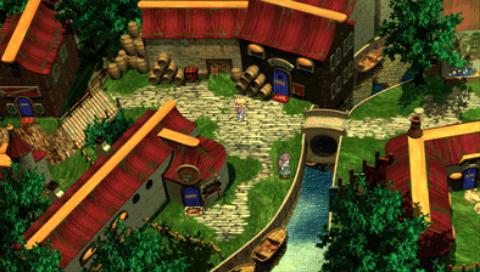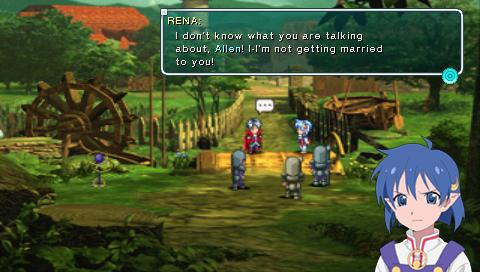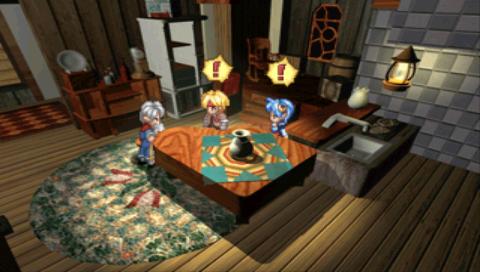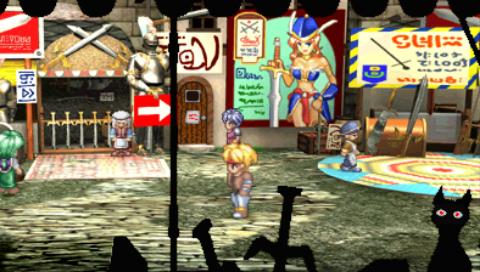Star Ocean: Second Evolution Review
Continuing on with their stated intent of remaking past games for current systems, Star Ocean: Second Evolution is the latest remake to arrive in the West, this time for PSP.
When we reviewed the first Star Ocean remake for the PSP, we said it was a serviceable remake and a charming and endearing game. Don’t expect much to change for this review, as Second Departure is almost identical in its presentation and style to First Departure, a nice touch that makes the two games nice bedfellows and a nice strong reminder that you’re playing the same series.

Second Evolution does have some major differences to First Departure, though, mainly due to the fact that the first game was a Super Nintendo title that never made it over to Western shores, while the second title was a PS1 title that actually did make it overseas.
Like its PSP predecessor, Evolution mixes pretty and retro-looking 2D character sprites with 3D battle scenes and pre-rendered backdrops. It’s an interesting mix and these days it looks rather unique and retro, reminding players of the PS1 era when every RPG was using this style. It looks great on the PSP’s screen, and of course this time the game is in widescreen because of the PSP’s screen size.
The gameplay is also extremely similar to its predecessor, to the point where menus are near-enough identical and spell and move names often are completely, so if you enjoyed the gameplay of the first remake you’re in for a treat. The reuse of so many assets creates an interesting cohesion between the two titles that is rare in RPGs, though playing one soon after the other may inspire boredom – a gap between the two is definitely advisable.

It’s all very traditional RPG in both games – walking around towns, buying weapons, heading into dungeons, fighting monsters, moving from place to place across the world in order to quest and save it. The battle system has you control one member of a party of four, with the others controlled by a CPU AI of your choosing. You can then move your character of choice around the screen to attack in an action-RPG style. You can switch to other party members to take control of them any time.
That said, the battle system is deeper than its predecessor on almost every level – the characters and their abilities are more varied, giving you a lot more to think about when choosing a party line-up. The item creating and skill systems are both back, too, though both are near-identical to the versions in First Departure.
Cutscenes are once again presented in a mixed style, this time split between in-game action, pre-rendered CG scenes and great looking anime cutscenes from the studio who created the Ghost in the Shell series. This is a slightly interesting choice as the CG scenes don’t quite fit the style of everything else, but it works well for the story narration.

Star Ocean: Second Evolution’s really clever design choice actually lies with the story, though. At the start of the game, you’re given the choice between two characters – Claude C. Kenny, the son of a character from the first game, or Rena Lanford, a newcomer to the series. The two meet in the storyline and work together throughout as heroes.
You can play as either – regardless of your choice, the story will follow both heroes, but your choice does provide several unique events, characters and situations, making a second playthrough of the game a good idea as it will provide a whole new angle on the story. The game also has multiple endings, Chrono Trigger style, which depends entirely on how your choice of main character acts throughout the story.
Optional story segments are also available by entering each town alone as different party members, allowing their development to be fleshed out in a very interesting way when they are alone. RPGs are long, but they rarely provide replay value, and so in this sense Second Evolution has both First Departure and most other RPGs trumped.

The music is great once again, and helps to set the style for the rest of the Star Ocean series, and is overall a better soundtrack than the previous game. Meanwhile, on the voice acting side, this is another Square Enix game with translation and voice acting a mixed bag – who’d have thought it? This game has far more good than bad, and thankfully all this overall well-written and well-acted stuff replaces the terrible stuff from the original, so it’s all good. Cringeworthy scenes keep slipping through Square QA, though, which is a shame.
Like First Departure, the game still feels old, though, and the auto-attack system can still be a pain in the ass when you are trying to keep maximum control over a battle – it just gets in the way and causes you more problems. The plot, while interesting, is again predictable and was even behind the curve when the game was first released in 1999. It’s very well presented, though.
Second Evolution is a better game than First Departure. The translation, voice acting, music and presentation are all of the same quality as the first PSP remake, with the gameplay improved and the storyline far more interesting, if still a little predictable. The game still suffers from the same flaws the first remake did – but when it’s this much fun, who cares? Recommended.